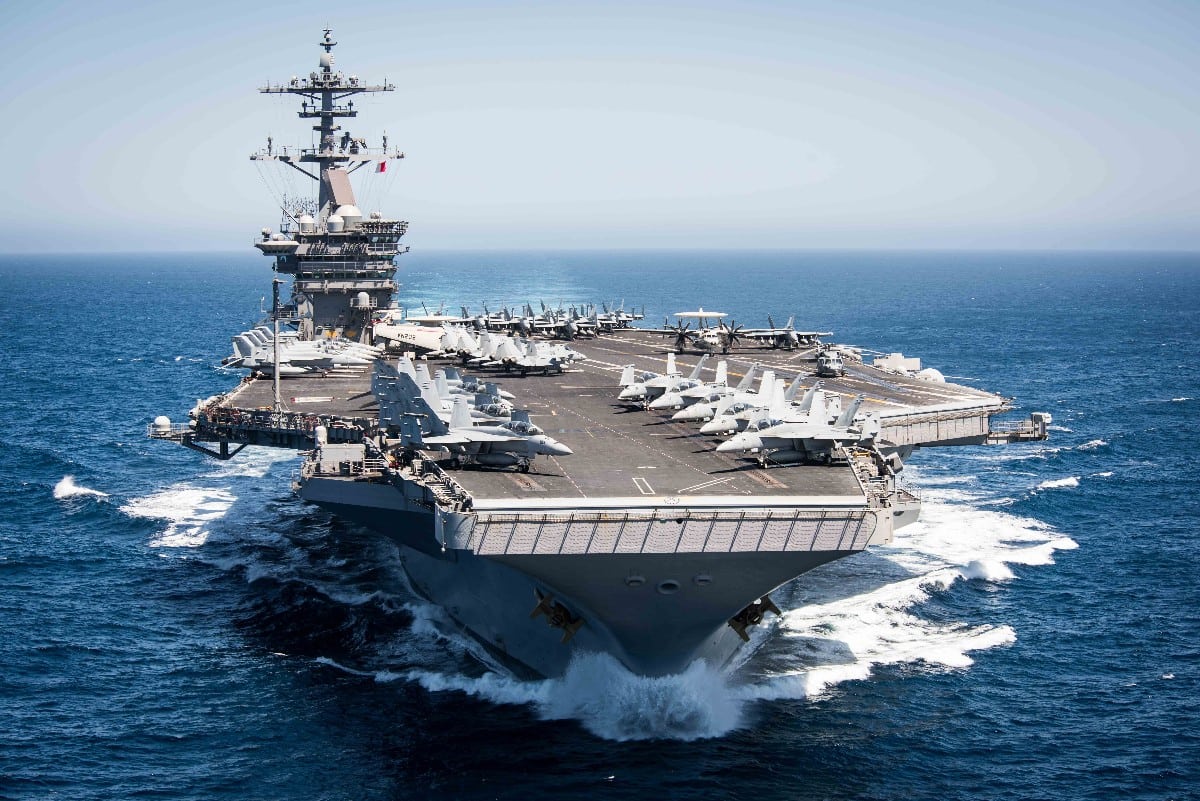 Photo courtesy of U.S. Pacific Fleet on Flickr
Photo courtesy of U.S. Pacific Fleet on Flickr
The (Common) Sense of Magnetic Catapults: EMALS
By Adam Siegel
President Donald Trump has, yet again, criticized the Navy for including the Electromagnetic Air Launch System (EMALS) in the new Ford-class aircraft carriers:
“Part of it is, they want to have all new. Instead of having the system that throws the aircraft off the [ship], which was always steam,” he said. “They now have magnets. They’re using magnets instead of steam. . . . They spent hundreds of millions of dollars, I’m hearing not great things about it. It’s frankly ridiculous.”
This mirrors Trump’s comments a year ago when he publicly attacked the ‘digital catapult system’ and asserted that he would order the Navy to go back to steam catapults on future aircraft carriers.
It sounded bad to me. Digital. They have digital. What is digital? And it’s very complicated, you have to be Albert Einstein to figure it out. And I said–and now they want to buy more aircraft carriers. I said what system are you going to be–”Sir, we’re staying with digital.” I said no you’re not. You going to goddamned steam, the digital costs hundreds of millions of dollars more money and it’s no good.
Yes, the EMALS program had serious development problems, drove lengthy program delays, cost nearly a billion dollars (three times the initial planned price), and remains not fully operational. Like many programs, EMALS spotty development track record didn’t live up to initial optimistic claims and has much to learn from (and, hopefully, not repeat). Despite that, the initial question as to “why EMALS” remains valid in a technology that is now embedded in the aircraft carrier program.
Trump’s offhand critiques gloss over the powerful reasons why the Navy chose – after numerous studies and decades of the world experience – to move from the mid-20th century hydraulic system to a 21st system.
In short, compared to the hydraulic system, the EMALS will
- Improve operational capability
- Achieves faster launch cycles of aircraft (the core purpose of an aircraft carrier, after all)
- Enable launching both heavier and lighter (such as unmanned aerial vehicles) airframes
- Increases Navy aircraft expected lives
- With greater precision on launch pressure and more even application, EMALS will put less stress on airframes and extend their expected operational lives.
- Reduce manpower requirements aboard ship
- Every sailor removed from an aircraft carrier equates to roughly $150,000-$200,000 in reduced annual costs.
- Through a 50-year life-cycle, one less sailor is perhaps $10 million in lower costs.
- Improve safety due to eliminating high-pressure steam lines
- Frees up space and weight (growth margin)
- Reduces stresses on other shipboard systems
- Such as reducing water demands and thus lessening requirements for water desalination.
In addition to operational capability benefits, EMALS will lead to literally billions of dollars of operational cost savings through the Ford-class aircraft carrier life cycle compared to steam catapults. Yes, as with many new military systems, EMALS is far from out of the woods in terms of achieving all of its performance objectives (and cost roughly three times more than planned – roughly a billion dollars even without counting the costs of how it delayed the overall program) but it is on the path to doing so. Going back to buying steam catapults wouldn’t save “hundreds of millions of dollars”, but likely cost a billion dollars or more in the acquisition and perhaps add over ten billion dollars to the costs of operating aircraft carriers.
As a Pentagon official put it generously last year
“You can see elements of reality in what he said, but I think he may have spoken without having all of the information in front of him,” the official said. “I think he either has time-late information, or the information he has is not correct.”
A year ago, “the information [the President had was] not correct”. Sadly, based on reporting of his recent comments, that ‘information’ remains “not correct”.
BIO NOTE
Adam Siegel has had a number of chances to work on issues related to aircraft carrier programs while at the Center for Naval Analyses (CNA) in the 1980s/90s and as the Senior Analyst, Naval, in the Northrop Grumman Analysis Center in the 2000s.






